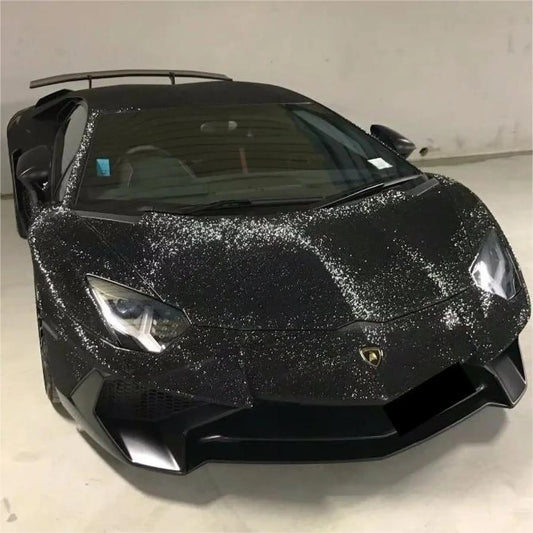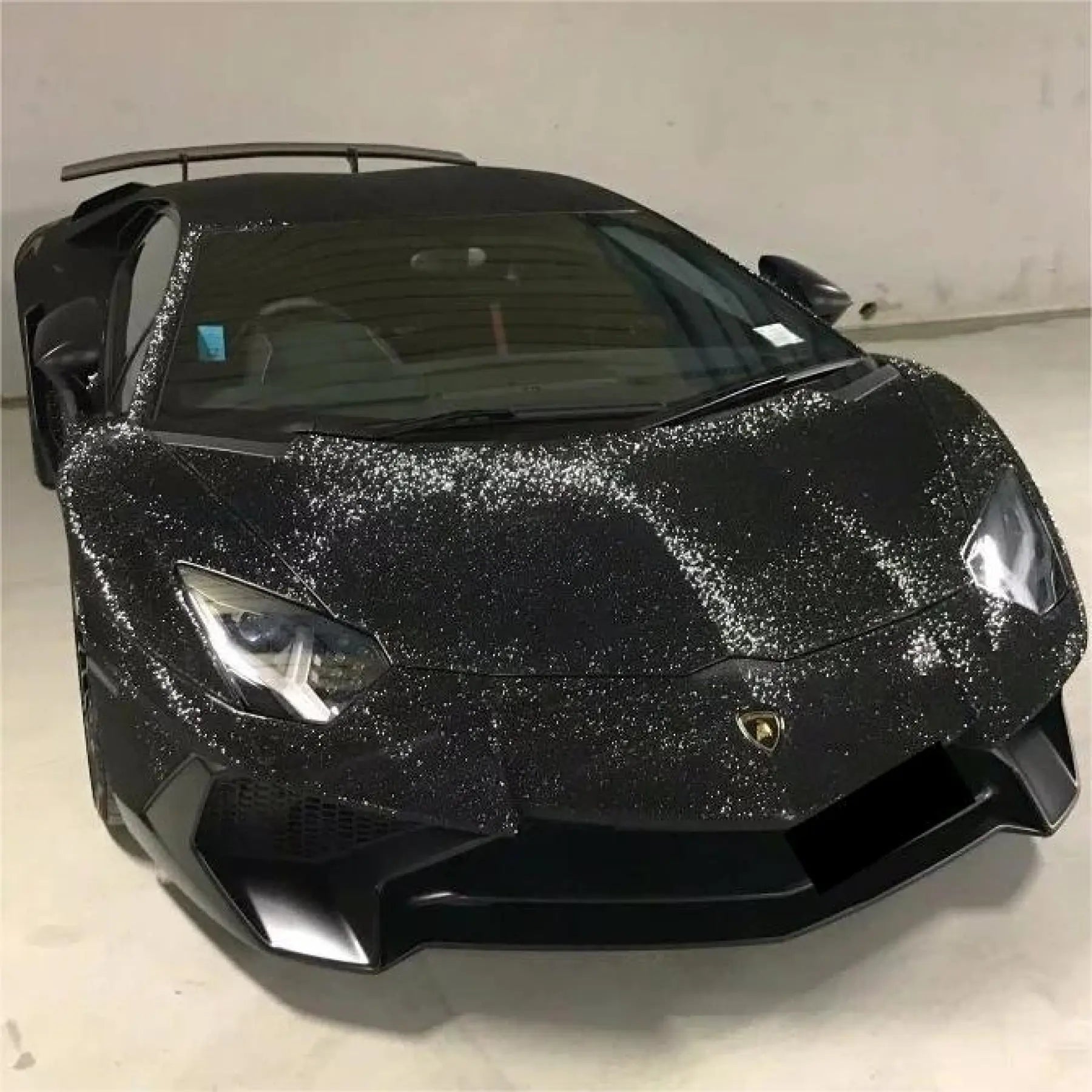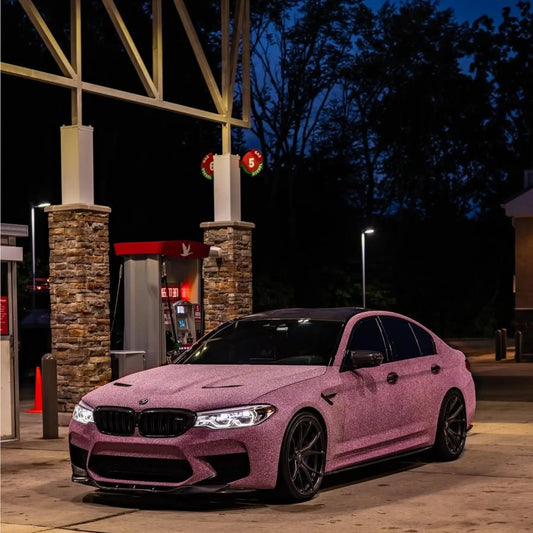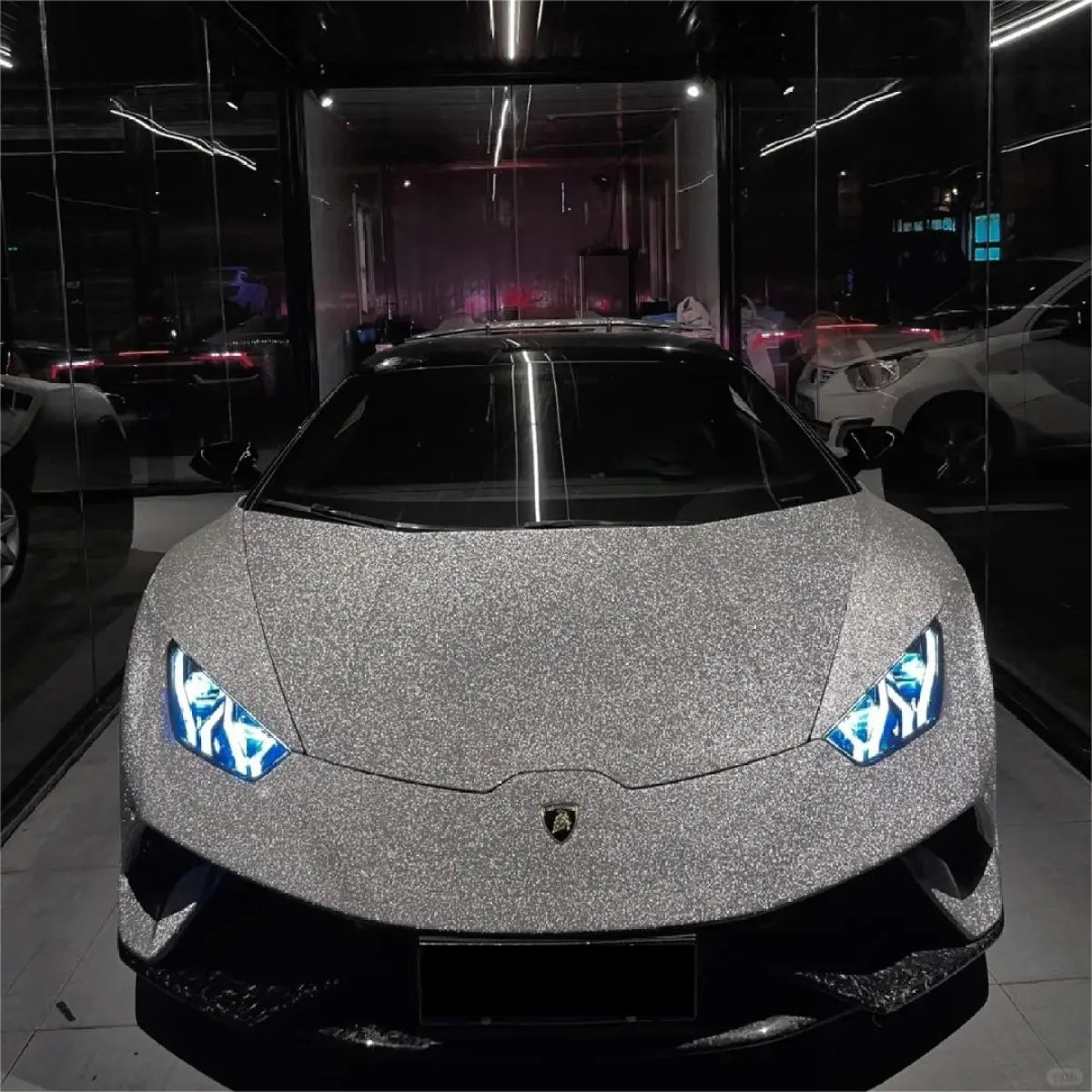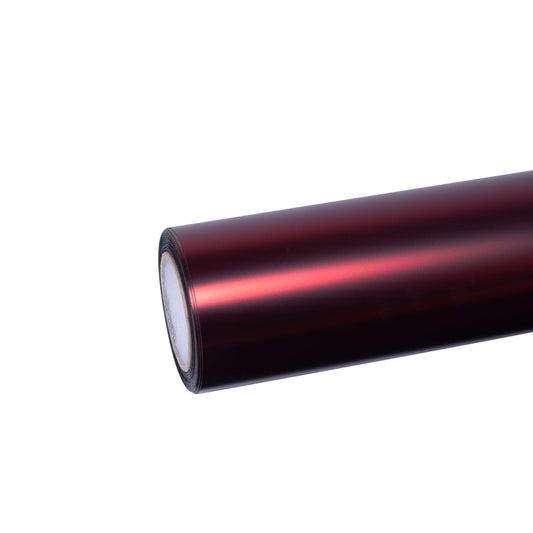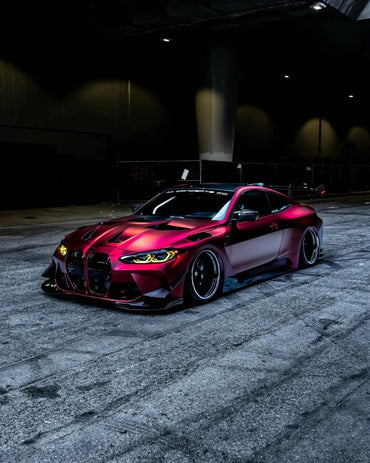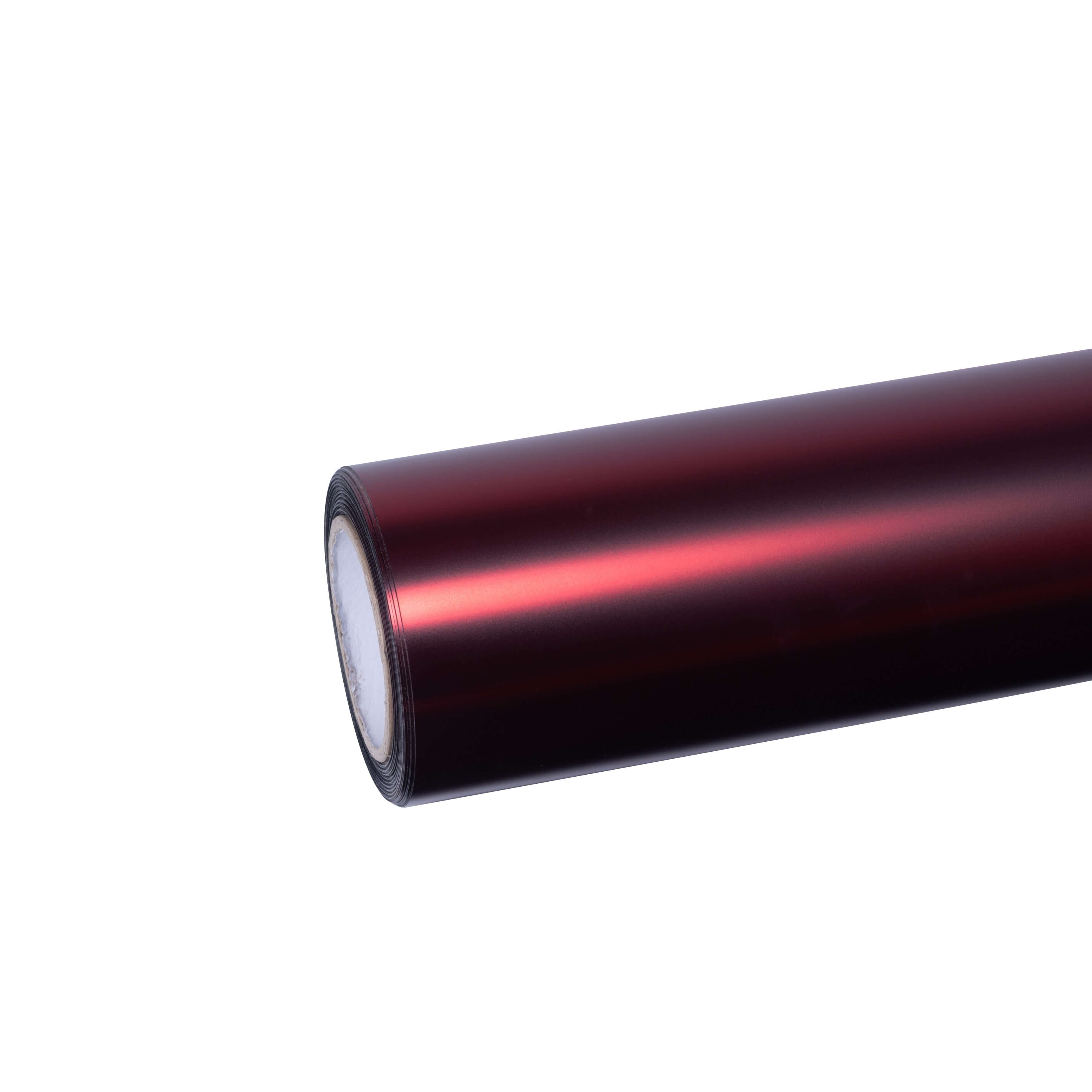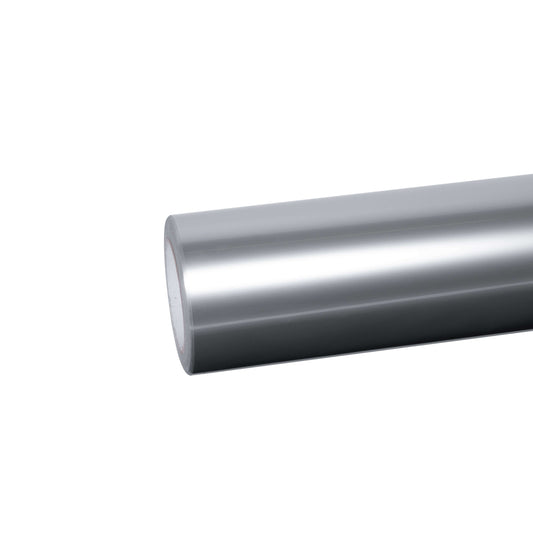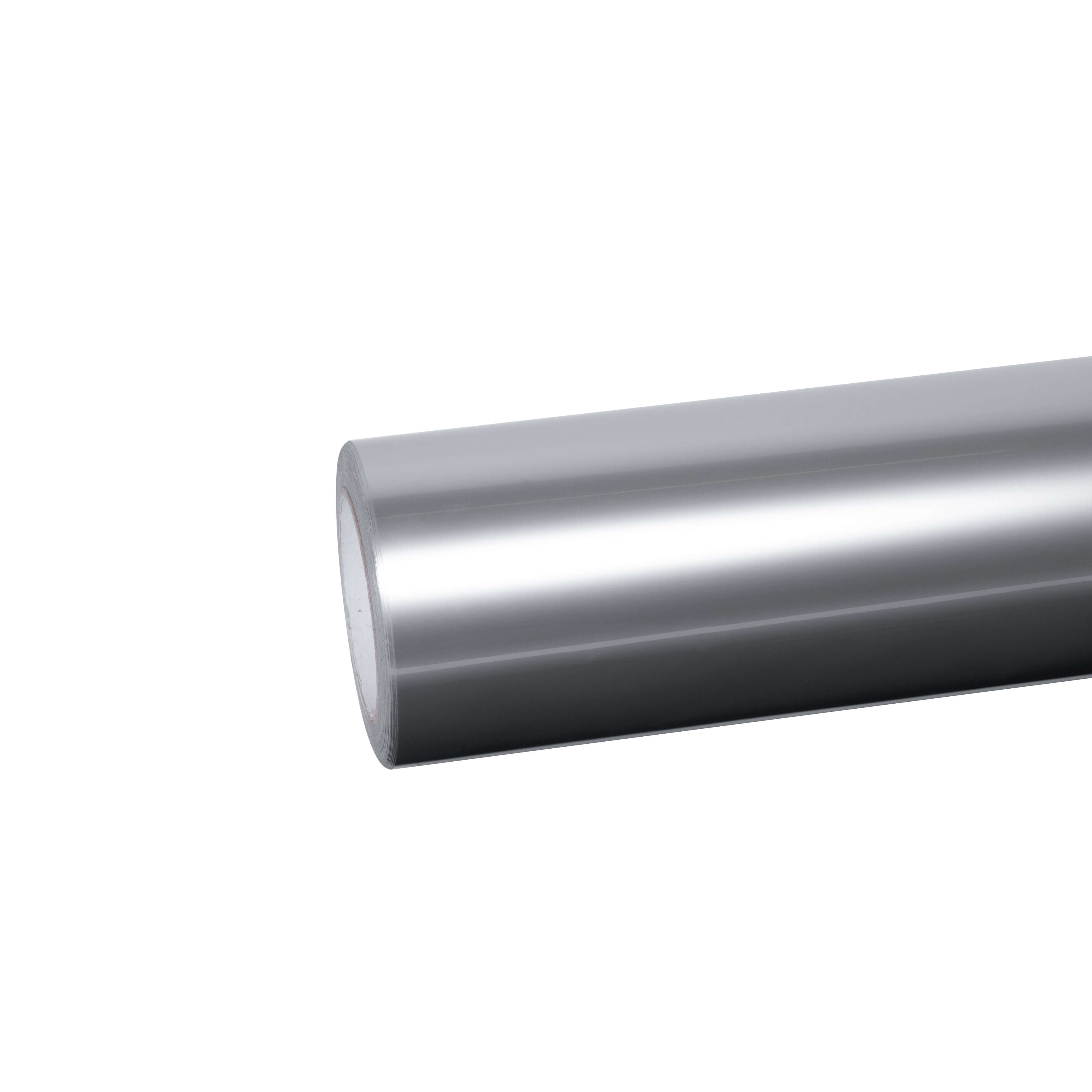Understanding Two-Tone Design Philosophy
Two-tone vehicle wraps divide your car's exterior into distinct sections, each featuring different colors, finishes, or textures. This design approach creates visual separation that emphasizes body lines, highlights curves, and adds dimensional depth to your vehicle's profile. The most successful two-tone designs balance contrast with cohesion, ensuring both colors complement each other while creating dynamic visual impact.
Why Carbon Fiber and Color Combinations Work
Carbon fiber brings technical sophistication and motorsport heritage to any vehicle. When paired strategically with colored wraps, carbon fiber's distinctive woven texture creates striking contrast against smooth, glossy, or matte finishes. This textural juxtaposition adds complexity and refinement that elevates your customization from simple color change to professional-grade styling.
The technical aesthetic of carbon fiber communicates performance and precision, while color selections express personality and style preferences. Together, they create a complete visual statement that resonates with automotive enthusiasts across all demographics.
Popular Two-Tone Design Strategies
1. Hood, Roof, and Trunk Configuration
The most common and cost-effective two-tone approach involves wrapping the hood, roof, and trunk in 3D carbon fiber while leaving the body panels in factory color or wrapping them in contrasting hues. This configuration provides maximum visual impact with moderate material investment.
Strategic advantages include:
- Emphasis on horizontal lines that make vehicles appear wider and more aggressive
- Protection for high-impact zones where sun damage and debris cause the most wear
- Seamless integration with factory body colors or complementary wrap colors
- Budget-friendly approach requiring less material than full-vehicle wraps
Consider pairing carbon fiber with Sailifilm's ultra matte wraps in colors like Ultra Matte Flat Pure White or Ultra Matte Dark Blue for refined contrast, or combine with liquid chrome wraps in metallic finishes for dramatic impact.
2. Split Panel Designs
Split designs divide the vehicle vertically, horizontally, or diagonally, creating bold geometric separation between carbon fiber and color sections. Vertical splits work exceptionally well on sedans and coupes, while horizontal splits enhance the aggressive stance of sports cars and performance vehicles.
Popular split configurations:
Vertical Center Split: Divides the car down the center line, with carbon fiber on one side and color on the other—perfect for show cars and unique personal statements.
Horizontal Body Line Split: Follows the natural character line of the vehicle, placing carbon fiber below and color above (or vice versa) for a factory two-tone appearance.
Diagonal Racing Stripe Split: Creates dynamic angles that suggest forward motion and speed, ideal for sports cars and performance builds.
The dual-color dream vinyl wrap collection offers pre-coordinated color combinations including Chameleon Green Blue, Gold Grey, and Purple Pink options that pair beautifully with carbon fiber accents.
3. Accent and Highlight Strategy
For those preferring subtlety, accent wrapping uses carbon fiber or contrasting colors on smaller components—mirrors, door handles, spoilers, diffusers, and trim pieces. This approach adds sophistication without overwhelming the vehicle's original design language.
High-impact accent areas:
- Side mirror caps wrapped in carbon fiber with metallic vinyl wraps on the body
- Front splitter and rear diffuser in carbon fiber paired with colored PPF on body panels
- Roof rails and window trim creating frame contrast against body color
- Door handles and fuel door adding subtle textural interest
4. Gradient and Fade Transitions
Advanced two-tone designs incorporate gradient fades that blend carbon fiber with color through seamless transitions. While technically complex, these installations create artistic, flowing designs that appear almost painterly in execution.
Sailifilm's rainbow laser vinyl wrap series features galaxy chameleon effects that transition beautifully from carbon fiber sections, creating mesmerizing color-shift gradients perfect for show vehicles and creative builds.
Selecting Color Combinations That Deliver Impact
Successful two-tone customization depends on strategic color selection. Understanding color theory helps you create combinations that enhance rather than clash.
High-Contrast Combinations
Bold contrast creates maximum visual separation and dramatic impact. These pairings work best when you want your vehicle to command attention.
Carbon Fiber with Vibrant Colors:
Pair carbon fiber's black-grey texture with Sailifilm's liquid chrome wrap in British Racing Green, Cherry Red, or Indigo Blue. The technical texture of carbon fiber grounds the boldness of saturated colors, creating balanced visual weight.
Black and White Foundation:
Carbon fiber (essentially black-toned) pairs perfectly with Ultra Matte Pure White or Crystal White Color PPF, creating timeless sophistication with sharp contrast. This combination works across all vehicle types, from luxury sedans to aggressive sports cars.
Neon and Carbon Accents:
For show-stopping impact, combine carbon fiber with glitter sparkle car wraps or bright metallic hues. The technical restraint of carbon fiber balances the exuberance of sparkle finishes.
Complementary Combinations
Complementary colors sit opposite on the color wheel, creating harmonious contrast that's visually pleasing without being aggressive.
Carbon Fiber with Blue Tones:
Pair carbon fiber's grey undertones with Gloss Crystal Sky Blue or Liquid Gloss Metallic Indigo Blue from the colored paint protection film collection. The cool tones create cohesive, sophisticated aesthetics.
Metallic Grey and Carbon Texture:
Combine carbon fiber with Sailifilm's Ultra Matte Metallic Grey Blue or Arctic Grey PPF for subtle contrast that emphasizes texture over color. This approach suits executive vehicles and luxury builds where understated refinement takes priority.
Monochromatic Depth
Monochromatic schemes use variations within a single color family, creating depth through finish variation rather than color contrast.
Carbon Fiber with Matte Black:
Layer carbon fiber texture against Ultra Matte Flat Meteorites Grey or Piano Black PPF. While subtle, this combination creates sophisticated depth through textural contrast—perfect for stealth builds and murdered-out aesthetics.
Grey Family Variations:
Combine carbon fiber with various grey tones from Sailifilm's best sellers collection, creating tonal gradations that highlight body contours through subtle shade variations.
Carbon Fiber Application Zones
Strategic carbon fiber placement maximizes impact while managing material costs and installation complexity.
Primary Impact Zones
Hood Application: The hood receives maximum visibility and sun exposure. Carbon fiber protection shields against UV damage while creating aggressive visual presence. Pair with contrasting body colors for maximum effect.
Roof Panels: Perhaps the most popular partial wrap application, carbon fiber roofs work on virtually every vehicle type. The contrast against body color creates horizontal visual separation that makes vehicles appear wider and more planted.
Trunk Lid: Balancing a carbon fiber hood, trunk applications complete the fore-aft symmetry. This configuration particularly suits sedans and coupes where hood and trunk proportions mirror each other.
Performance Accent Zones
Side Skirts and Rocker Panels: Carbon fiber along lower body lines creates ground effects appearance while protecting vulnerable areas from rock chips and road debris.
Front Splitter and Rear Diffuser: Functional (or aesthetic) aerodynamic components wrapped in carbon fiber communicate motorsport influence and technical sophistication.
Spoilers and Wings: Carbon fiber on rear spoilers bridges the gap between trunk applications and rear body panels, creating cohesive design flow.
Detail Enhancement Zones
Mirror Caps: Small but highly visible, wrapped mirror caps add refinement without significant material investment.
Antenna and Shark Fins: Carbon fiber on roof-mounted components creates subtle detail interest.
Interior Trim Panels: Extend exterior carbon fiber themes into the cabin with dashboard, console, and door panel accents.
Professional Installation Considerations
Two-tone installations require precision planning and execution to achieve professional results.
Surface Preparation
Thorough decontamination removes wax, oils, and debris that compromise adhesion. Professional installation begins with clay bar treatment, isopropyl alcohol wipe-down, and complete drying before film application.
Precision Cutting and Alignment
Two-tone designs demand perfect alignment where colors meet. Professional installers use knifeless tape to create clean separation lines without risking blade damage to paint underneath. This technique enables precision cuts following body lines, character creases, and panel boundaries.
Heat Application and Post-Heating
Proper heat application activates adhesive and enables film to conform to complex curves. Carbon fiber vinyl requires careful heating to avoid damaging the textured surface. Post-heating after installation ensures maximum adhesion and longevity.
Edge Sealing
Two-tone installations create additional seams where colors meet. Professional edge sealing prevents moisture intrusion and lifting, ensuring long-term durability.
For DIY enthusiasts, Sailifilm offers sample kits allowing you to test materials and practice techniques before committing to full installation. Professional wrapping tools including squeegees, heat guns, and knifeless tape make precision work achievable.
Protecting Your Investment
Two-tone customizations benefit from protective strategies that extend lifespan and maintain appearance.
TPU Paint Protection Film
Consider applying TPU paint protection wrap over high-impact zones. This transparent protective layer shields colored wraps and carbon fiber from rock chips, scratches, and environmental damage without altering appearance.
Maintenance Best Practices
Regular Washing: Hand wash with pH-neutral automotive soap, avoiding automated car washes that may lift wrap edges or damage textured surfaces.
Avoid Harsh Chemicals: Skip petroleum-based cleaners and aggressive degreasers that degrade vinyl adhesive and protective coatings.
Protect from Prolonged Sun Exposure: While modern wraps feature UV protection, covered parking extends color vibrancy and prevents premature fading.
Address Edge Lifting Promptly: Inspect seams regularly and re-heat any lifting edges to maintain water-tight seals.
Cost-Effective Two-Tone Strategies
Full vehicle wraps represent significant investment. Strategic two-tone approaches maximize impact while managing costs.
Partial Coverage Approach
Wrapping only hood, roof, and trunk in premium carbon fiber while leaving body panels in factory color delivers approximately 60% of full-wrap visual impact at roughly 30% of material cost.
Accent-Only Configuration
Carbon fiber on mirrors, spoiler, and trim pieces costs under $200 in materials but creates immediate visual sophistication—perfect for budget-conscious customization.
Phased Installation
Begin with high-impact zones like roof and hood, then add additional sections as budget allows. This phased approach lets you spread costs while building toward complete vision.
Trending Two-Tone Combinations for 2025
Current automotive styling trends favor specific color and texture pairings that dominate social media and car shows.
Carbon and Satin Finishes
Pairing textured carbon fiber with ultra matte satin finishes creates sophisticated contrast through texture variation. Popular combinations include carbon fiber with Satin Chrome Metallic Romance Red or Ultra Matte Magic Purple.
Carbon with Chameleon Effects
The rainbow laser series features galaxy chameleon finishes that shift between multiple hues. Against carbon fiber's static texture, these dynamic colors create mesmerizing contrast that changes with viewing angle and lighting.
Carbon and Liquid Metal
Liquid chrome wraps in deep metallics like British Royal Green or Metallic Avalon Green paired with carbon fiber create luxury performance aesthetics suitable for high-end builds.
Carbon with Crystal Effects
The crystal vinyl wrap collection offers dimensional sparkle that contrasts beautifully with carbon fiber's technical texture—perfect for show vehicles and creative personal builds.
Design Planning and Visualization
Before purchasing materials or beginning installation, thorough planning prevents costly mistakes and ensures satisfying results.
Digital Mockups
Many wrap shops offer digital rendering services that show how proposed color combinations will appear on your specific vehicle. This visualization helps refine color choices before material investment.
Physical Samples
Order sample kits to view colors and textures in person under various lighting conditions. Samples reveal how carbon fiber texture interacts with different finish types—information impossible to judge from digital images alone.
Reference Vehicle Research
Browse completed builds on social media, car forums, and manufacturer galleries. Seeing how carbon fiber and color combinations appear on vehicles similar to yours provides valuable insight into scale, proportion, and visual balance.
The Future of Two-Tone Customization
Automotive wrap technology continues evolving, bringing exciting possibilities to two-tone design.
Advanced Carbon Fiber Patterns
Beyond traditional weave, new carbon fiber styles including forged carbon, honeycomb patterns, and colored carbon offer expanded design possibilities.
Smart Color-Changing Films
Emerging technologies enable wraps that change color with temperature, light, or electrical current—creating dynamic two-tone effects that shift based on conditions.
Sustainable Materials
Eco-friendly wrap materials with biodegradable properties and low-VOC adhesives make customization more environmentally responsible without compromising appearance or durability.
Conclusion: Creating Your Perfect Two-Tone Design
Two-tone vehicle customization combining carbon fiber with color wraps offers endless creative possibilities. Whether you're drawn to bold contrast, subtle sophistication, or somewhere between, strategic material selection and professional installation deliver stunning results that express your unique automotive vision.
The key to successful two-tone design lies in thoughtful planning—considering your vehicle's proportions, your personal style preferences, your budget parameters, and your long-term goals. Start with inspiration from Sailifilm's comprehensive car vinyl wrap collection, order samples to test combinations in person, and work with experienced installers (or develop your DIY skills) to bring your vision to life.
From aggressive motorsport aesthetics to refined executive styling, two-tone customization with carbon fiber and color creates distinctive vehicles that stand apart from factory offerings. Your car becomes a canvas for personal expression while gaining protective benefits that preserve underlying paint and maintain resale value.
Ready to transform your vehicle with two-tone customization? Explore Sailifilm's extensive collections including 3D carbon fiber wraps, dual-color dream series, and premium colored PPF options. Order sample kits to experience quality firsthand, and equip yourself with professional wrapping tools for flawless installation. Your perfect two-tone design awaits.


